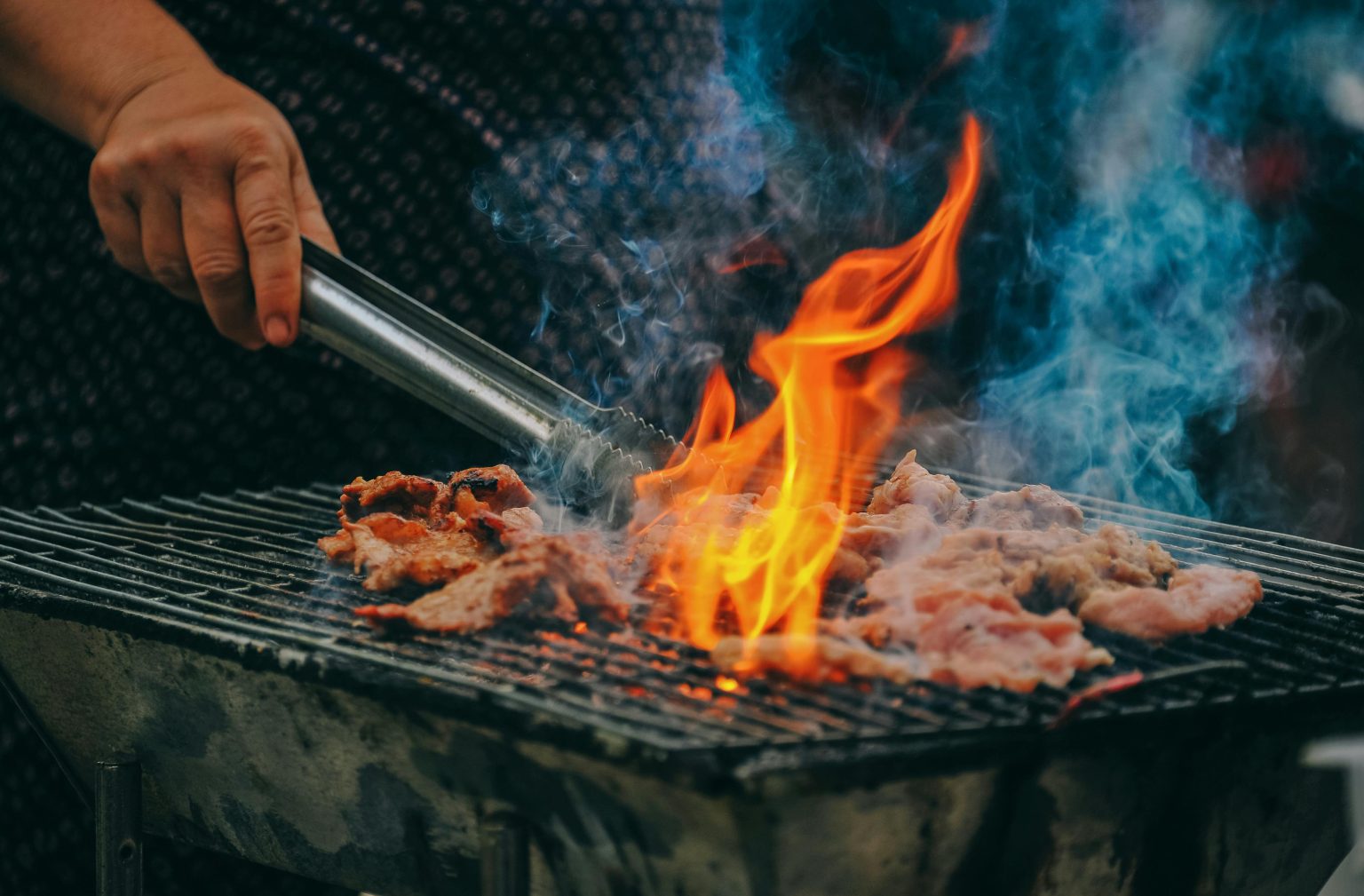-
Food hygiene expert explains how to clean your BBQ, ready for the first sun
-
Tips on how to prep, cook and store your BBQ food
Now that summer has arrived, Brits all across the country will be relishing the arrival of ‘BBQ weather’.
To help you prepare your grill and safely cook your food on a BBQ this summer, Natasha Blythe, food hygiene expert at High Speed Training has shared her 6 steps to make sure you’re ready to cook now the sun is here.
-
Pre cleaning is essential
Whether your BBQ has been outside or stored in the garage over winter, it’s likely that it will need a good clean to make sure it’s safe and sanitised to cook on this summer.
Natasha says: “Firstly, remove any grills, griddles or hot plates to be washed separately. Give them a scrub with a wire scourer or some scrunched up tin foil to remove any stubborn bits of burnt food residue. Next, give them a thorough wash with hot, soapy water. If they’re dishwasher safe, you can also give them a final clean to make sure they are thoroughly cleaned.
“Finally, give all elements of the BBQ which can’t be removed, but may come into contact with food, a wipe down with an antibacterial cleaner, and ensure that any charcoal residue is cleaned from the BBQ. You should also use this time to wash any BBQ tools or utensils which you will be using.”
-
Preparing your feast
BBQs involve a lot of moving parts, and it takes a bit of thought and pre planning to get everything ready to be served on time.
Natasha shares: “Start your preparation by thawing any frozen items by removing them from the freezer and letting them gradually defrost in the refrigerator overnight, otherwise you risk your meat containing dangerous cold spots.
“When it comes to serving side dishes, such as salads, ensure they remain covered and undressed until you’re ready to serve. This will avoid them becoming soggy and attracting unwanted insects. You should also ensure that no food, regardless of whether it’s raw or ready to serve, remains outside of the fridge for more than 30 mins before eating, and make sure to avoid leaving anything out in the sun.”
-
Fire up the BBQ
Your food is prepped, your guests are ready, when should you start cooking?
Natasha explains: “If you’re cooking on a charcoal BBQ, you need to ensure the initial flames have died down and the coals are glowing. If you start too soon, you risk scorching the outside of your meat without adequately cooking the inside. Gas BBQs are more forgiving, allowing you to start earlier as you do not have to wait for the flames to die down.
“You should also ensure that as the coals begin to lose heat, you wrap up your cooking. The final stages of a BBQ do not contain sufficient heat to actually cook your meat, so it’s best to stop as the embers die down.”
-
Consider your cooking order
With a small cooking surface, avoiding cross contamination based on dietary requirements or food hygiene can prove to be challenging.
Natasha comments: “First and foremost, ensure that any allergy considerations are factored into your plans in advance. These foods should be prepared separately, and cooked first to avoid any risk of contamination. In addition, any dietary restrictions or requirements should also be addressed before the rest of the meal.
“When it comes to cooking your meat, you should try your best to cook different types in different areas of the BBQ surface, but this isn’t always possible. Begin by cooking meat which poses the lowest risk of food contamination, for example red meat, before meat with a higher risk of contamination, such as chicken or pork.”
-
Avoid turning your meat to charcoal
Cooking on a BBQ can carry concerns that food is undercooked, and many people will often overcook their meat to avoid any risk of food poisoning.
Natasha explains: “Cooking on a BBQ, whether it’s charcoal or gas, poses challenges when it comes to determining whether your food is cooked. When you think your meat might be ready, cut into it to see how it looks, and cook for longer if you have the slightest doubt. Your meat should be cooked all the way through, whilst some beef products like steak, can remain slightly pink inside.
“Alternatively, if you have a food thermometer, check the internal temperature of the meat is at least 70C.”
-
Cover and reheat
It’s very easy to over buy for a BBQ, and inevitably there will often be leftovers. To ensure these don’t go to waste, you can keep them for another day, if stored correctly.
Natasha says: “Place all of your meat in sealed, air tight containers, but avoid placing them in the fridge until they have fully cooled. If not, you risk raising the internal temperature of the fridge and causing bacteria to develop in all refrigerated items.
“You can reheat all types of meat, and some items, like chicken, steak or pork can be eaten cold in a sandwich or salad. Whatever the meat, and however it has been cooked, remember to thoroughly reheat to at least 70C, and only reheat once.”
For more information about High Speed Training and their food hygiene courses, visit the website.
